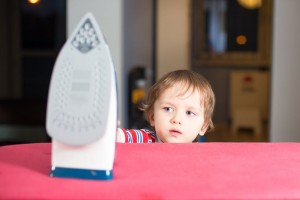 By Victoria Ipri – Staff Writer
By Victoria Ipri – Staff Writer
This week is National Burn Awareness Week.
Each year, more than 500,000 people in the United States and Canada receive medical treatment for burn injuries. Approximately 50 percent of these burn injuries are scalds, a burn caused by hot liquid or steam.
At highest risk are children, the elderly, and the disabled. Because most scald burns happen in the home during the cooking or serving of hot food or beverages, or from exposure to hot water during bathing, it is vital to make changes within the home environment to prevent scald injuries. Increased awareness of risks, changing certain habits, and lowering water temperatures can make a big difference.
How Serious is a Scald Injury?
Scald injury severity depends largely on how long the skin is exposed to the heat source, and the temperature of the heat source at the time of exposure. Residential water heaters, for example, should be set no higher than 120 degrees Fahrenheit for use by adults. At this temperature, adult skin burns fully within a few minutes. However, an increase in water temperature of only 20 degrees can cause skin to burn in five seconds or less. Consider that hot beverages such as cocoa and tea are frequently served at 160 or 180 degrees, and it is clear how easily and quickly a scald injury can occur.
Who is At Risk?
Young children have less surface area and thinner skin than young adults, meaning greater exposure and deeper burns can result more quickly. Older adults also have thinner skin, as well as the potential for reduced awareness of heat, due to medical conditions, poor circulation or medications. Older adults are also more prone to falls, so that bathing or carrying hot liquids can pose additional dangers. Among the disabled, a variety of challenges may impair movement, sensations, or thinking, creating higher risk.
Because scald injuries can result in pain, prolonged medical treatment, possible scarring or other disfigurement, or even death, it is crucial to take steps to make your home safer. In particular, safeguard bathrooms and the kitchen and dining areas, and think about the safe use of less commonly used items, such as potpourri warmers, vaporizers using hot steam, and home radiators or space heaters.















